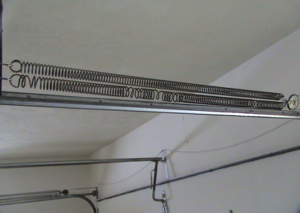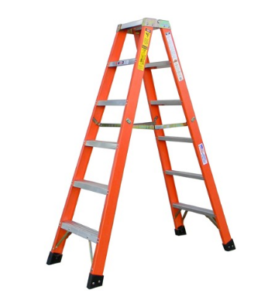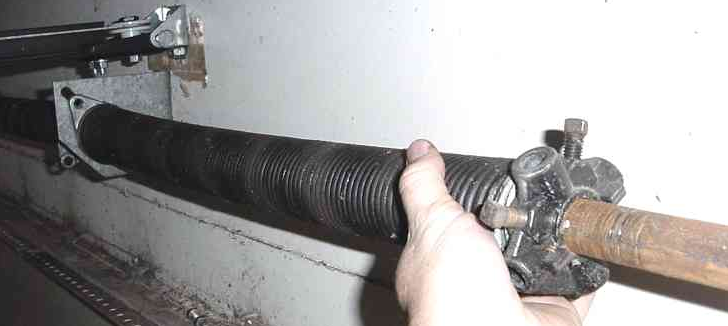Garage door spring replacement is an anticipated measure since springs are usually apt to deterioration. Door springs usually do the work a lot since they ensure that the door opens and closes the way it should be. So if you notice that your door is not opening or closing evenly, this can be an indication that you need to replace the door springs. Make sure that you check the garage doors and its springs in order to avoid any accidents or further damage.
There are two door springs for a garage that you should be familiar with, the torsion spring and the extension spring. Door torsion springs for the garage are found along the top of the garage doors. It works using the mechanism of twisting. Sturdy cables are attached to the garage door, and when the torsion springs begin to twist, these cables help the door lift as it opens. Conversely, the torsion springs extend when the door closes. Torsion springs are difficult and dangerous to replace, so you need to be very careful or better yet get a professional help in doing so.
Garage door extension springs use the mechanism of stretching. These springs are found on the rim of the garage doors and ensure that the door opens and closes evenly on both sides. Extension springs are side-mounted and are usually long and weighty springs. These springs need to be checked and replaced once in a while as they deteriorate due to frequent usage and exertion of force.
 Garage door spring replacement is never easy. In fact, most of the accidents during door repairs for the garage happen while changing the springs. But with proper caution and skill to do the job, everything else will just turn out right. You should be able to know how to adjust the springs correctly because either increase or decrease in spring tension can cause the door not to open or close properly. When your door looks imbalanced, chances are you have loose springs somewhere. So be able to inspect the springs carefully and do the necessary replacement.
Garage door spring replacement is never easy. In fact, most of the accidents during door repairs for the garage happen while changing the springs. But with proper caution and skill to do the job, everything else will just turn out right. You should be able to know how to adjust the springs correctly because either increase or decrease in spring tension can cause the door not to open or close properly. When your door looks imbalanced, chances are you have loose springs somewhere. So be able to inspect the springs carefully and do the necessary replacement.
Gather all necessary tools and accessories that you need when you do the garage door spring replacement beforehand. Check the springs and other parts of the doors regularly to know if it is time to do the repair and spring replacement. There are replacements and even repair that you can do by yourself by referring to the manual as your guide. Make sure to follow the steps on the manual to ensure that you are doing the right thing.
 To perform this piece of maintenance, you’ll need a ladder, a couple of C-clamps, replacement springs and a wrench. Now, torsion springs come in a variety of sizes and gauges. You’ll need to find out what size your garage door unit needs and get them because tightening an incorrectly sized spring won’t make up for it being weaker. Conversely, if it’s too large, it simply won’t fit the other components of your unit.
To perform this piece of maintenance, you’ll need a ladder, a couple of C-clamps, replacement springs and a wrench. Now, torsion springs come in a variety of sizes and gauges. You’ll need to find out what size your garage door unit needs and get them because tightening an incorrectly sized spring won’t make up for it being weaker. Conversely, if it’s too large, it simply won’t fit the other components of your unit.
–First you need to mark the cables with a permanent marker. There are drums on either side of your garage door that contain spools which the cable wraps and unwraps around every time you use your door. If the cables are still tight, mark a spot on the drum and the cable to align them later. If they’re loose, pull them into place before marking them. DO NOT touch the drum or the cable with your hands. The spring may break and cause you serious injury.
–There are two winding bars that are used to wind the spring. They’re about a foot and a half long, made of steel or iron and should fit snugly into the holes of the winding cone so they have maximum leverage. The winding cone is located on the bar above the door, on the end of the spring. The bars should not be worn on the ends and shouldn’t easily slip out of the winding cone. If the bars can move more than 1 inches while inserted into the cone, you need new bars. Mark the bars while they are inserted to see if they slip out.
–Put a bar into a hole on the winding cone. Keep your grip tight. Use an open-ended wrench to loosen the set screws. This will place the spring tension on the bar, so hold tightly. Keeping the bar in the winding cone, rotate the cone to loosen the spring. If you meet any resistance, a set screw may need to be loosened further. Do not take your hand off the bar. If the cone will not unwind at all, replace the set screws and call a professional.
–After the cone is loose, continue rotating the cone until the spring is unwound. Insert the second bar on the first has been rotated downward. Repeat the previous steps on the other side.
–Once the springs have been safely unwound, remove the bolts that hold the stationary torsion cones in place. The stationary cones are located on the other end of the springs near the center of the door. After you’ve removed them from the center, slide the springs to the side of the door on either end.
